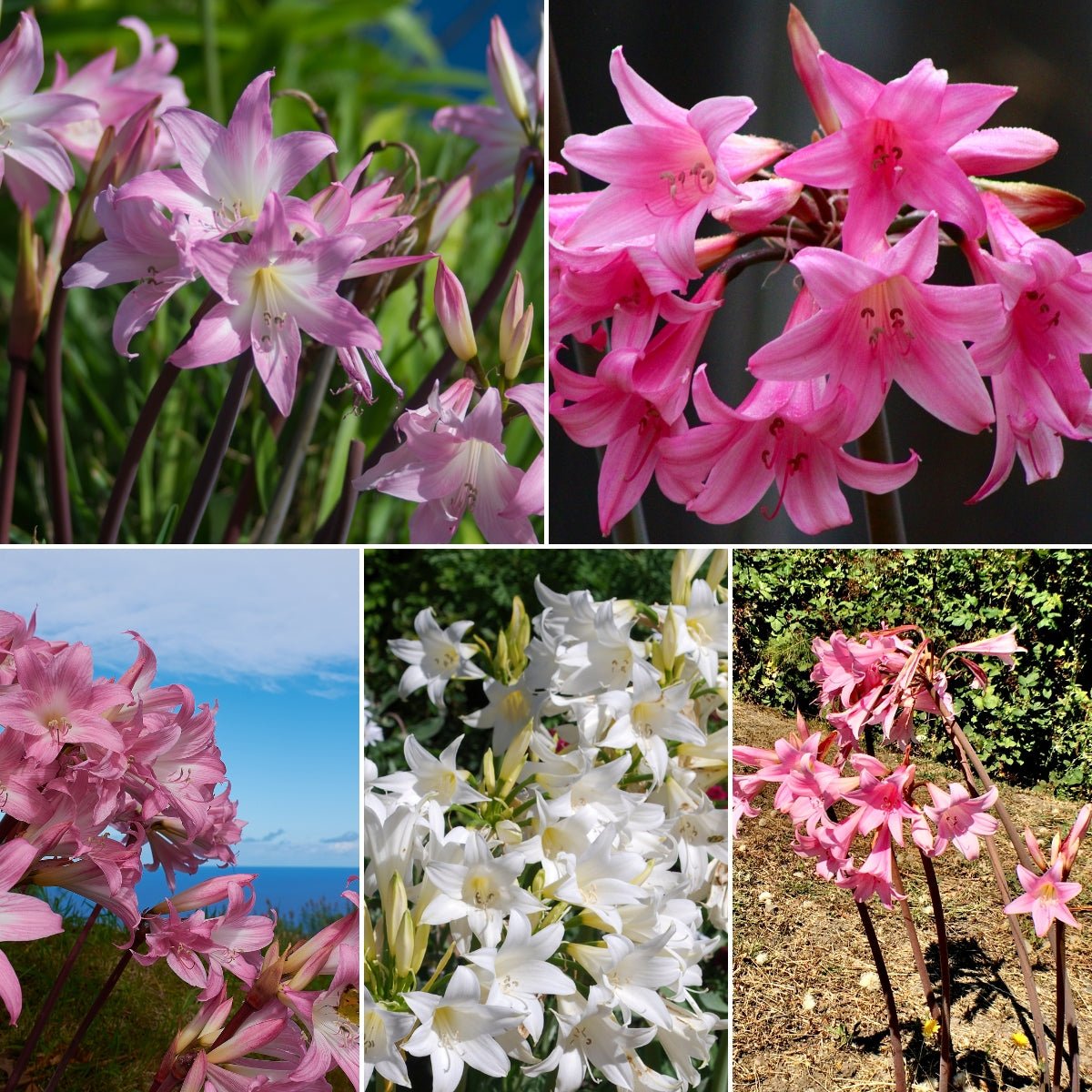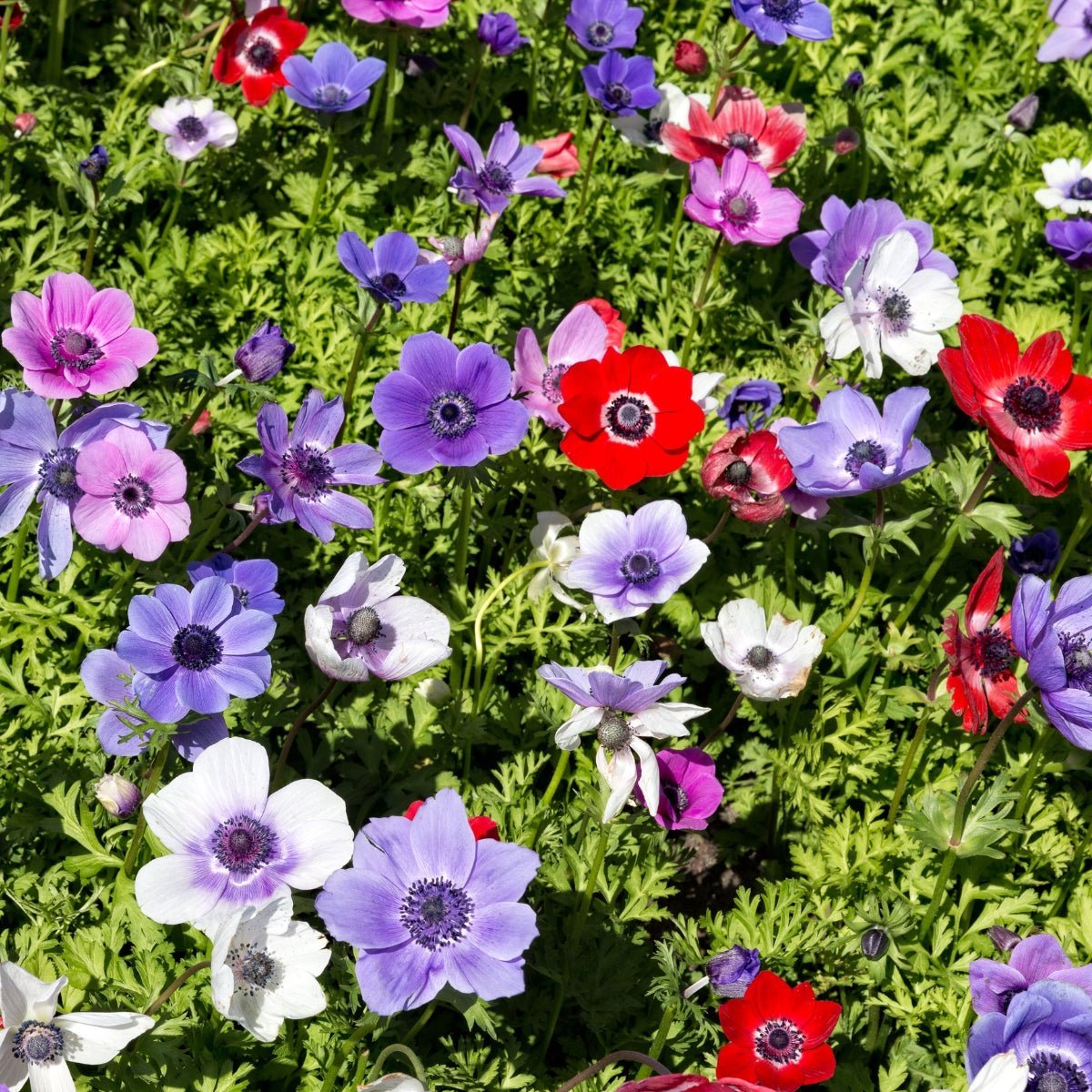Anemone De Caen are known for their bright, poppy-like flowers that appear in late winter and spring. They come in vivid shades of red, purple, pink, and white, and are a favourite among gardeners for their long flowering season and minimal maintenance needs. These spring-flowering perennials grow from small, dried tubers and are ideal for garden beds, borders, pots, and cut flowers.
Botanical Overview
-
Botanical name: Anemone coronaria (De Caen Group)
-
Common names: Poppy Anemone, Windflower
-
Plant type: Tuberous perennial
-
Height: Around 20–40 cm when in flower
-
Native to: Mediterranean region
-
Flower shape: Single open blooms with dark centres and satiny petals
-
Toxicity: Toxic to pets and humans if eaten
Where They Grow Best in Australia
These plants prefer mild to cool climates. Best results are seen in:
-
Southern Western Australia
-
Victoria
-
Tasmania
-
ACT
-
Higher-altitude parts of NSW
-
Cooler regions of South Australia
-
Coastal parts of Queensland during the cooler months
In areas with cold winters, tubers may need lifting and storing after flowering. In milder spots, they can stay in the ground year-round.
When and How to Plant
Best planting time: Mid-autumn to early winter (April to June)
Steps:
-
Soak tubers in lukewarm water for 3–4 hours to rehydrate.
-
Choose a spot with full sun or light afternoon shade in warmer zones.
-
Ensure soil is loose, free-draining, and enriched with compost. Avoid waterlogged areas.
-
Plant tubers about 5–7 cm deep and 10–15 cm apart. Unsure which way is up? Plant them sideways.
-
Water after planting to settle the soil.
Water and Feeding
-
Keep soil slightly moist during active growth. Avoid soggy conditions.
-
In areas with winter rain, you may not need to water often.
-
Use a balanced, slow-release fertiliser when planting.
-
For more blooms, apply a liquid flower fertiliser every fortnight during growth.
Growth and Flowering
-
Shoots appear 2–3 weeks after planting.
-
Flowers arrive roughly 10–12 weeks later, typically from late July through September.
-
After flowering, leaves will yellow and die back as the plant becomes dormant.
In areas with heavy frost or summer rain, lift and store tubers once foliage dies down. In milder, dry-summer areas, they can stay in the soil.
General Care Tips
-
Deadhead to extend flowering and neaten the plant.
-
Mulch lightly with lucerne or sugarcane to keep moisture in and weeds down.
-
In rich or windy areas, flower stems may lean—support if needed.
Pests and Issues
-
Common insects: Aphids, thrips, and mites. Spray with insecticidal soap or neem oil if needed.
-
Diseases: Powdery mildew and rot can occur in poorly drained or crowded spots. Provide airflow and avoid wetting foliage.
Growing in Pots
-
Use a pot 20 cm or deeper with drainage holes.
-
Fill with quality potting mix and a handful of sand or perlite.
-
Place in a sunny but sheltered spot.
-
Water more regularly than in-ground plants but avoid waterlogging.
-
After flowering, let the soil dry and lift if necessary.
Propagation
-
Mature tubers can be divided in summer while dormant.
-
Ensure each piece has a growth point.
-
Seeds can also be grown but take longer to flower.
Good Plant Pairings
-
Works well with other spring flowers like tulips, pansies, violas, ranunculus, and daffodils.
-
Try pairing with silver or low-growing foliage plants for contrast.
-
Can be planted under deciduous trees or in natural-style beds.
For Cut Flowers
-
Pick blooms when buds are just opening.
-
Cut stems on an angle and place into clean, cool water.
-
Change water daily and re-cut stems every two days.
Troubleshooting
-
No flowers: Check sunlight, crowding, or too much nitrogen.
-
Yellow leaves early: Likely from overwatering or poor drainage.
-
No sprouts: Tubers may have rotted. Only plant healthy, firm ones.
Sustainable Tips
-
Use compost and natural mulches.
-
Water with collected rainwater.
-
Grow near pollinator plants like lavender or native flowers.
In Summary
Anemone De Caen is a bright, rewarding addition to Australian gardens. Easy to grow with a few seasonal steps, they bring colour, charm, and joy to garden beds and pots alike. With good soil, the right timing, and proper care, they’ll keep blooming year after year.
Note: Keep away from pets and children—tubers are toxic if ingested.





